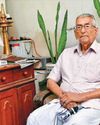
The Saryu makes an oxbow bend at Ayodhya. The original city was nestled within that bend. According to some texts, the original Ayodhya goes back to 600 BCE. So it is logical to believe that there would have been use of earth and stone, not brick. I believe in the permanence of a place, the continuity with which it has existed for eons. The place remains, we just keep building and rebuilding over it. Many places exist in our psyche. For example, Sita ki Rasoi (the kitchen of Sita). Our logical mind might argue about its impossibility, but then why is only that place called so? The Saryu has changed course, but still the Ram ki Paidi (a series of ghats along a stretch of water that is now pumped from the Saryu through motor pumps) remains revered. Belief gives it a strong sense of sacred space. There is so much mythology that, to a believing mind, it is difficult to say where mythology ends and history begins. Religiosity becomes more animated with mythology.
What about the more recent city?
The city's most recent form would have been constructed in 15th-17th century when the influence of Buddhism waned. Thus, the profuse use of lakhauri bricks (flat, thin, red burnt clay bricks). The grain of the city is dense with a strong vernacular imprint. It has a typical typology. Any old haveli will have a big courtyard with a mandir at its centre. The living rooms were around the courtyard. Same in Kashi, but with smaller mandirs.
This story is from the January 14, 2024 edition of THE WEEK India.
Start your 7-day Magzter GOLD free trial to access thousands of curated premium stories, and 9,000+ magazines and newspapers.
Already a subscriber ? Sign In
This story is from the January 14, 2024 edition of THE WEEK India.
Start your 7-day Magzter GOLD free trial to access thousands of curated premium stories, and 9,000+ magazines and newspapers.
Already a subscriber? Sign In

Trump And The Crisis Of Liberalism
Although Donald Trump's election to a non-consecutive second term to the US presidency is not unprecedented—Grover Cleveland had done it in 1893—it is nevertheless a watershed moment.

What Will It Take To Clean Up Delhi Air?
IT IS ASKED, year after year, why Delhi’s air remains unbreathable despite several interventions to reduce pollution.

Men eye the woman's purse
A couple of months ago, I chanced upon a young 20-something man at my gym walking out with a women’s sling bag.

When trees hold hands
A filmmaker explores the human-nature connect through the living root bridges

Ms Gee & Gen Z
The vibrant Anuja Chauhan and her daughter Nayantara on the generational gap in romance writing

Vikram Seth-a suitable man
Our golden boy of literature was the star attraction at the recent Shillong Literary Festival in mysterious Meghalaya.

Superman bites the dust
When my granddaughter Kim was about three, I often took her to play in a nearby park.

OLD MAN AND THE SEA
Meet G. Govinda Menon, the 102-year-old engineer who had a key role in surveying the Vizhinjam coast in the 1940s, assessing its potential for an international port

Managing volatility: smarter equity choices in uncertain markets
THE INDIAN STOCK MARKET has delivered a strong 11 per cent CAGR over the past decade, with positive returns for eight straight years.

Investing in actively managed low-volatility portfolios keeps risks at bay
AFTER A ROARING bull market over the past year, equity markets in the recent months have gone into a correction mode as FIIs go on a selling spree. Volatility has risen and investment returns are hurt.